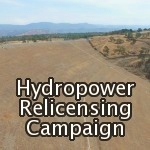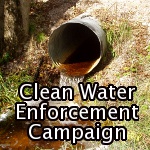Article from SF Gate.
April 3, 2024
By Aly Brown
Bay City News
Gov. Gavin Newsom on Tuesday announced the release of the state’s updated water plan, which garnered both support and criticism.
As he stood in the snow-packed Sierra Nevada for a press conference during the April snow survey at Phillips Station, Newsom said the new reality of climate extremes requires a new approach and elevated sophistication in terms of managing the water system.
“The water system in California was designed for a world that no longer exists,” he said, referring to the drastic weather events that have occurred over the last decade, compared to 50 or 60 years ago.
“California is the size of 21 state populations combined. And as a consequence, there’s no one size that fits all … Focusing on local strategies and solutions is the framework, the backbone, of our strategies,” Newsom said.
The plan cites three themes — addressing climate urgency, strengthening watershed resilience, and achieving equity — and seven objectives, along with recommendations on how to meet them. The objectives are to:
-Support watershed resilience planning and implementation
-Improve resiliency of “backbone” state, federal and regional built water infrastructure
-Improve resiliency of natural “backbone” infrastructure
-Advance equitable outcomes in water management
-Support and learn from tribal water and resource management practices
-Support and increase flexibility of regulatory systems
-Provide guidance and support continued resources for implementation of actions toward water resilience
California Farm Bureau president Shannon Douglass commended the plan.
“We’re encouraged that the plan highlights infrastructure projects to capture, store and convey water supplies,” Douglass said. “We’re also pleased that it seeks to reduce permitting burdens for projects that support water resilience, including through groundwater recharge and habitat restoration.”
The California Farm Bureau works to protect family farms and ranches on behalf of more than 26,000 members statewide and as part of a nationwide network of 5.8 million members.
However, many felt that the state’s updated water plan supports problematic infrastructure projects that will harm the Sacramento-San Joaquin Delta Estuary. The Delta Conveyance Project, also known as the Delta tunnel, is cited as a recommendation to achieve the second objective of improving resiliency of water systems.
Chris Shutes, California Sportfishing Protection Alliance executive director, said the update had not changed much from the draft, in which numerous environmental groups left comments highlighting their concerns pertaining to the Delta Conveyance Project.
The current version of the project would construct two water intakes in the North Delta and one underground tunnel. The system would pull water from the Delta and connect it to the Bethany Reservoir on the California Aqueduct, before delivering it to homes and farms in Central and Southern California. The single-tunnel project replaces the twin-tunnel California WaterFix project, which was abandoned in 2019. DWR certified the project’s environmental impact report in late December 2023.
State officials and proponents say the Delta Conveyance Project will modernize the state’s aging water system, which is currently not equipped to capture water amid climate change conditions or to withstand large earthquakes. Supporters include agricultural entities and Southern California water agencies. But opponents, including some tribal nations and environmentalists, have raised numerous issues with its design, such as the impact to the Delta’s ecosystem, businesses, and urban and cultural communities.
Shutes called the plan’s support of developing water at the expense of the environment “fundamentally unsound.”
“The Plan Update’s support of massive new diversions of water, such as Sites Reservoir and the proposed Delta tunnel, to feed an already over-allocated water budget is like using a home equity line of credit to pay the mortgage,” Shutes explained. “While such a strategy makes resources available in the short term, it only increases the long-term debt.”
In an October letter to the state Department of Water Resources, Shutes — along with representatives of 10 environmental and wildlife advocacy groups — highlighted faulty DWR data and excessive water consumption to be critical problems with the plan.
Recognizing the need for food, the groups provided proposals for agricultural land-use diversification to reduce water demands, including incentives for land retirement in drainage-impaired lands in the Central Valley along with investments for alternative crops and wetland restoration in the Sacramento-San Joaquin Delta. They also proposed alternatives to the tunnel to include conservation and recycling.
Bob Wright, counsel for Sierra Club California, which also signed the letter, couldn’t believe the DWR would first approve the project without conducting a cost-benefit study for public review and comment. He felt there was a general lack of public transparency.
“It’s a very clever scheme to transfer billions of dollars upwards from homeowners and renters to the contractors who get to build this thing,” Wright said, noting that draining the Delta amid climate changes could result in a tunnel that no longer has enough water to send south. “The tunnel could become what we call a ‘stranded asset.'”
He said the tunnel could destroy the Delta estuary, turning the area into a stagnant pond with negative health impacts to endangered species and humans.
For a project that will pull water directly from the Delta, Wright wanted to know how the DWR could certify an environmental impact report that doesn’t consider the impacts on surface water.
“There really is no environmental impact report on this massive project. There’s a document they call an environmental impact report,” Wright added. “However, it says right in chapter five in the first paragraph it does not evaluate, under the California Environmental Quality Act, the impacts of the project on surface water.”
John Buse, senior counsel for the environmental group Center for Biological Diversity, agreed with Newsom that California’s water system was designed for a world that no longer exists.
“But the big storage and conveyance projects he is pursuing are also from a completely bygone era,” Buse said. “Building a gigantic tunnel below the Delta to send Northern California’s water south is essentially the same environmentally disastrous scheme that has been floated and rejected for 50 years. And large surface storage projects are inefficient boondoggles.”
Government leaders assert that California’s water system, which has historically depended on the Sierra Nevada snowpack melting into rivers and dams, needs a modernized way to capture water from atmospheric rivers and storms brought on by climate change.
California Natural Resources Agency Secretary Wade Crowfoot joined Newsom and the DWR snow survey team at Phillips Station on Tuesday and noted that water extremes are not an anomaly, they are the future.
He shared that since the start of Newsom’s administration, water agencies have come together to establish a broad portfolio of actions needed to adjust to the changing conditions and invest billions into adapting the water systems.
“We need to confront this changing reality, and confront it we have,” Crowfoot said.









